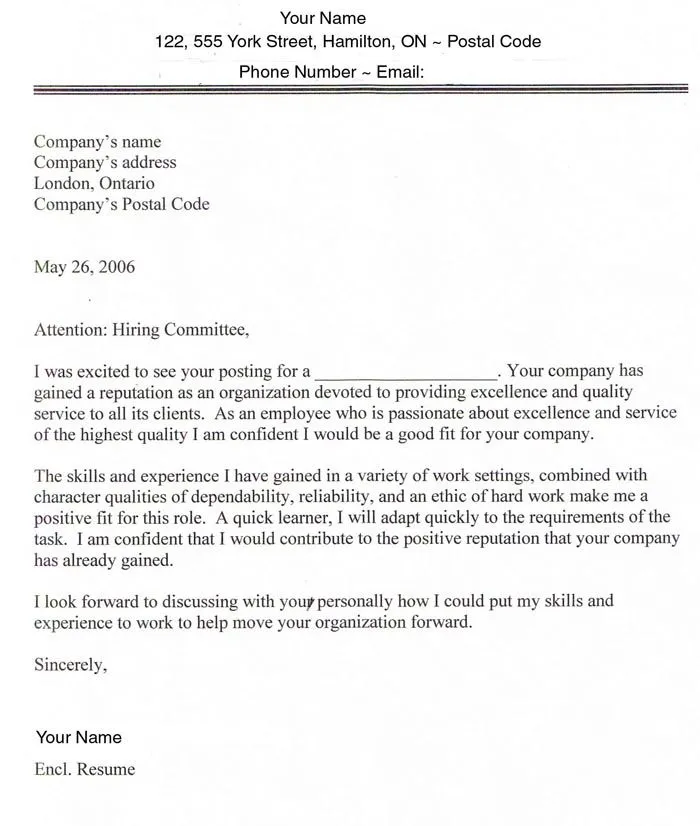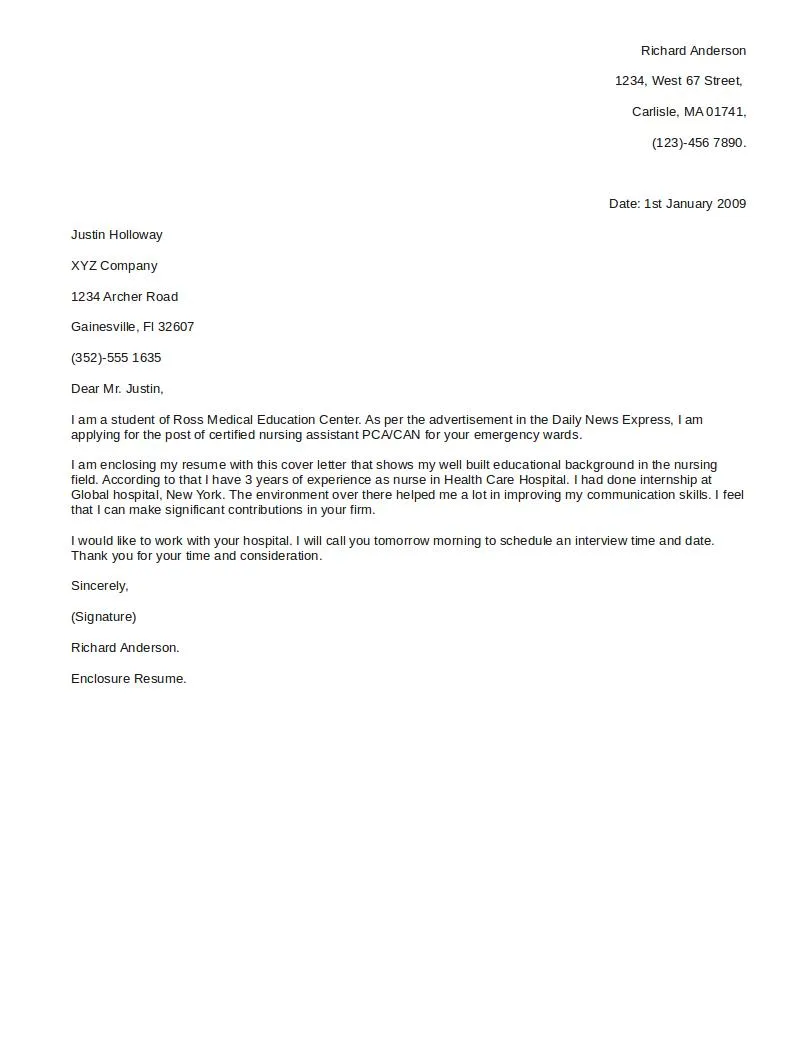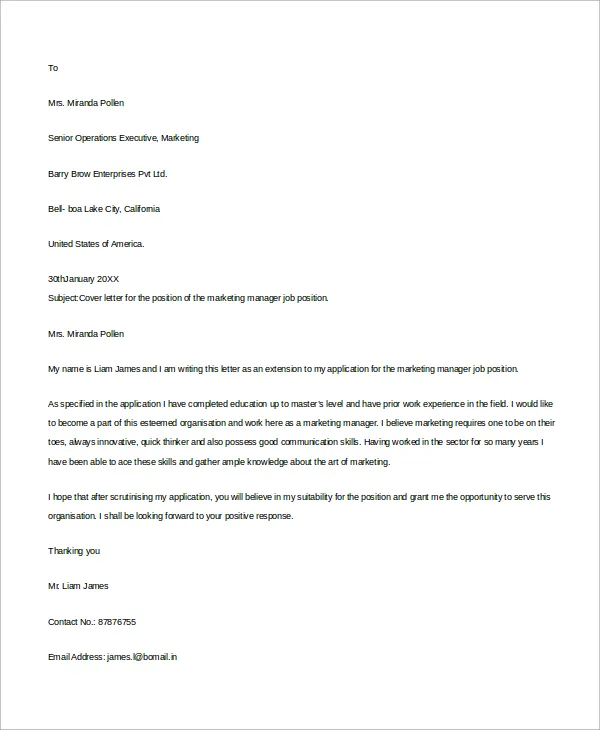Why a Cover Letter Matters in Your Job Search
In the competitive landscape of modern job searching, a well-crafted cover letter is no longer optional — it’s essential. Many job seekers underestimate the power a cover letter holds in shaping a recruiter’s first impression. This document serves as your personal introduction, a chance to showcase your personality, and a way to connect your skills directly with the job requirements. Think of it as your opportunity to go beyond your resume and tell a story that captures the hiring manager’s attention. A strong cover letter significantly increases your chances of getting noticed. It provides context to your resume, explaining career transitions, highlighting achievements, and demonstrating genuine interest in the position. This is your chance to make a lasting impact and increase your chances of getting an interview. A cover letter is your initial introduction to the potential employer, your chance to create a positive and lasting impression.
The Power of a Compelling Cover Letter
A compelling cover letter is much more than a simple formality; it’s a powerful tool that can significantly boost your chances of landing an interview. It’s the place where you can demonstrate your understanding of the job requirements, the company culture, and your enthusiasm for the role. It’s your opportunity to address any potential gaps in your resume, explain career transitions, or highlight specific skills that make you a perfect fit. With a well-crafted letter, you can differentiate yourself from other applicants by showcasing your personality and your unique qualifications. A compelling letter immediately grabs the reader’s attention, creating a positive impression. It provides a narrative that brings your resume to life, illustrating how your experiences and skills align with the job’s demands. Remember, you want to demonstrate that you’re not just qualified but also the right fit for the company.
What to Include in Your Cover Letter

Crafting a cover letter that stands out requires strategic planning and content selection. Begin by researching the company and the specific job requirements, identifying key skills and experiences. Your cover letter should include an opening that captures the reader’s attention, a middle section that showcases relevant skills and experiences, and a closing that reiterates your interest and prompts action. You must be concise and make it easy for the hiring manager to quickly grasp your qualifications. Your goal is to show, not just tell, your value. Provide specific examples that demonstrate your achievements. Make certain that your letter is clear, easy to read, and free of grammatical errors. Personalize each letter to the specific job and the company. This shows that you’ve put in the necessary effort and have a sincere interest in the opportunity.
Highlighting Your Skills and Experience
When crafting your cover letter, highlight your skills and experiences, which are directly relevant to the job description. Start by identifying the key skills and qualifications listed in the job posting. Use those keywords to showcase your relevant experience. Don’t just list skills — provide concrete examples of how you’ve used them to achieve results. For instance, instead of stating you have ’leadership skills,’ explain how you led a team and achieved a specific outcome, like increasing sales or improving efficiency. Quantify your achievements with metrics, such as ‘increased sales by 15%’ or ‘reduced costs by 10%.’ This approach adds credibility and makes your letter more compelling. Tailor each cover letter to the specific job requirements, emphasizing the skills that align best. Doing so provides a clear picture of how you can contribute to the company’s goals and will make you stand out.
Tailoring Your Cover Letter to Each Job
Generic cover letters often get overlooked. To truly capture the attention of hiring managers, you must tailor your cover letter to each job application. This involves a deep dive into the job description and company information. Carefully read the job posting, identifying the key requirements and desired qualifications. Then, align your skills, experiences, and achievements with those specific needs. Research the company’s mission, values, and culture. This will allow you to demonstrate how your career goals align with theirs. Show the hiring manager that you understand the role and are excited about the opportunity. Mentioning specific projects, initiatives, or company values demonstrates that you’ve taken the time to understand their needs and that you are prepared to contribute. This attention to detail and personalized approach significantly increases your chances of getting an interview.
Researching the Company and the Role

Before you start writing your cover letter, invest time in researching the company and the specific role. This crucial step allows you to tailor your letter to the company’s needs and demonstrate your genuine interest in the position. Visit the company’s website, read their ‘About Us’ section, and explore their recent news or press releases. Identify their mission, values, and recent projects or initiatives. Look for opportunities to connect your skills and experience with the company’s goals. Research the specific job description thoroughly. Note the key responsibilities, required skills, and qualifications. Use these insights to highlight how your background aligns with the role’s demands. Mentioning specific projects, company values, or recent achievements shows that you have invested the effort to learn about the company and role. This level of detail distinguishes you from other applicants and emphasizes your commitment.
Structuring Your Cover Letter for Impact
The structure of your cover letter can significantly impact its effectiveness. A well-organized letter is easy to read and highlights your key qualifications. Begin with a clear and compelling introduction. State the position you’re applying for and how you learned about it. Follow with a paragraph or two that highlights your relevant skills and experiences, providing specific examples and measurable achievements. In the middle section, align your qualifications with the job requirements. Use action verbs and concise language to showcase your value. Finally, conclude with a strong closing paragraph. Restate your interest in the role, thank the hiring manager for their time, and include a call to action, like inviting them to review your resume or offering to discuss your qualifications further. A clear, concise, and well-organized structure is key to making a lasting impression.
The Perfect Opening Paragraph
The opening paragraph of your cover letter is your chance to make a strong first impression and capture the reader’s attention. It sets the tone for the rest of the letter, so it should be engaging and informative. Start by stating the position you are applying for and where you saw the job posting. Then, briefly introduce yourself and express your enthusiasm for the opportunity. In your opening, you want to immediately demonstrate your understanding of the company and the role. Briefly mention how your skills and experience align with the key requirements. If someone referred you, mention the name. Keep the opening concise and focused, as the goal is to grab their attention quickly. You want to make them eager to read the rest of your letter and learn more about your qualifications. A well-crafted opening can set you apart from the competition.
Showcasing Your Achievements

Showcasing your achievements is essential to make your cover letter impactful. Instead of simply listing your responsibilities, focus on the outcomes you achieved. Use the STAR method (Situation, Task, Action, Result) to structure your examples. Describe the situation you were in, the task you needed to complete, the actions you took, and the results you achieved. This approach makes your achievements more concrete and provides context for your skills. Quantify your achievements whenever possible. Use numbers to demonstrate the impact of your work, like increasing sales by a certain percentage, reducing costs, or improving efficiency. This data will make your accomplishments more persuasive. Select achievements that are relevant to the job requirements. Tailor each cover letter to the specific role and company, highlighting the accomplishments that best align with their needs. Your goal is to provide evidence of your skills and abilities and to show the value you can bring to the role.
Crafting a Strong Closing
The closing of your cover letter is your last chance to make a lasting impression. It should reiterate your interest in the role, thank the hiring manager for their time, and include a clear call to action. Restate your enthusiasm for the opportunity and why you believe you are a good fit. Express your gratitude to the hiring manager for considering your application. Include a clear call to action, such as inviting them to review your resume or offering to discuss your qualifications in more detail. Provide your contact information, including your phone number and email address, for easy communication. Make sure your closing is professional, friendly, and tailored to the specific job and company. A strong, well-crafted closing can help you secure an interview and get you closer to landing your dream job.
In conclusion, a cover letter is a powerful tool for making a great impression and winning your dream job. Remember to always tailor your cover letter to each job you apply for, and to always review it for grammar and spelling before sending. Good luck!
